Jintachi Sword: The Most Popular LARP Blade

What’s in this article?
Unlike historical swords, fantasy swords such as the Jintachi sword are especially popular particularly within role-playing communities. Commonly seen in the media and prevalent in many sword markets, the appeal of the Jintachi is on the rise. In this article, we delve deep into the characteristics of the Jintachi sword, its composition, potential uses, and the rich history that informs its design and structure.
What is a Jintachi Sword?
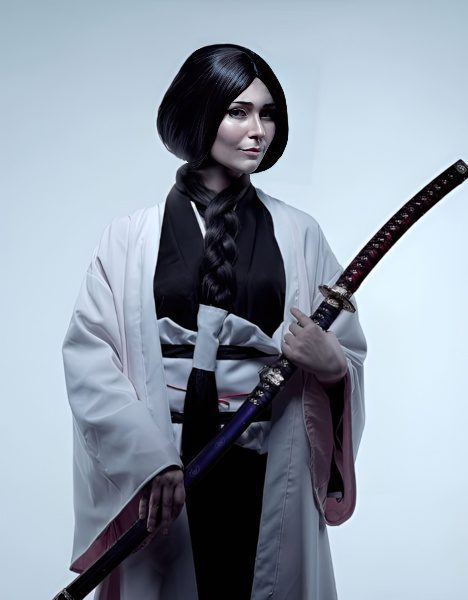
The Jintachi Sword is a Japanese sword that never existed historically, but became popular in modern times thanks to contemporary media, especially anime. It is a take on the Tachi sword that preceded the Katana. While the Jintachi is based on a real and historical blade, it features brilliant elements.
The most popular of all is the use of Damascus Steel, which increases the aesthetic appeal of the blade. Some Jintachi feature a second Tsuka-Maki wrap on their scabbards, an unorthodox curved blade that is unlike the Tachi, different colored Hamon pattern, and even cuts on the blade to resemble teeth.
Most of the Jintachi swords come in a stainless steel variant, typically used in decorative swords that can be used in LARP (live action role-playing) events. While it is rare, there are functional swords in the same style made out of carbon steel that can be used for slashing and cutting.
Characteristics of a Jintachi Sword
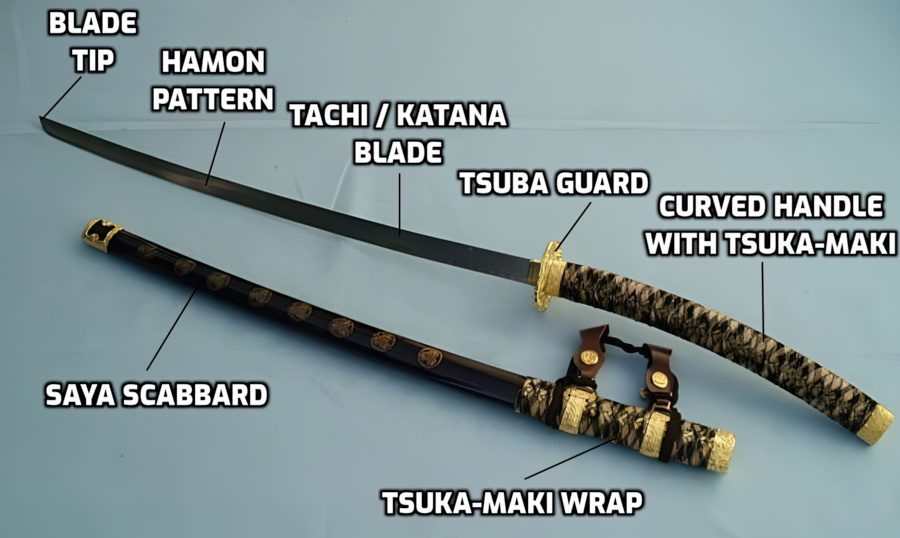
Jintachi swords are very easy to recognize and distinguish thanks to their unique characteristics and traits. They are a somewhat hybrid sword between the Katana and the Tachi and while they can feature the same Koshirae (mountings and fittings), they are quite different in design.
Blade
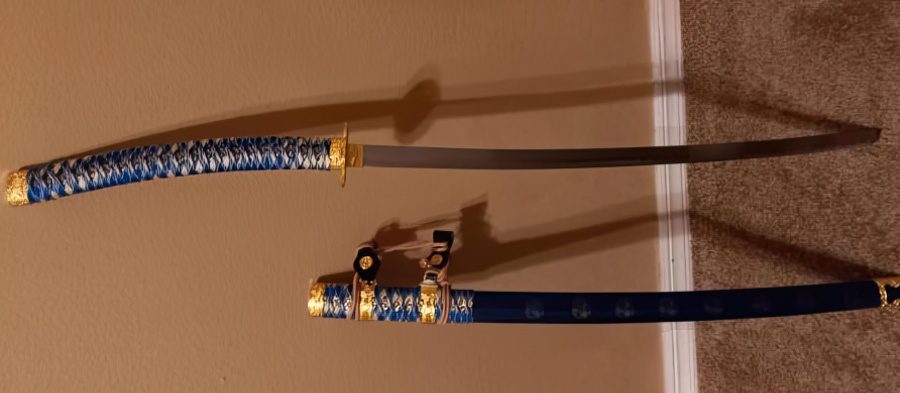
The single edged blade of the Jintachi Sword is either mildly curved and similar to a Katana, or has a more prominent curve to resemble the Tachi. A very common trait of the blade is the presence of the Hamon (a blade pattern that is traditionally present on samurai swords) or a Bohi (fuller).
Jintachi blades can be heavily decorated with some engravings and texts. While they might look the same, stainless steel Jintachi blades are made for decoration while high carbon steel blades are more for functional purposes. While the blade can come in a variety of lengths, the most common blade length for a Jintachi sword is around 24 to 30 inches (60 to 76 cm).
Guard
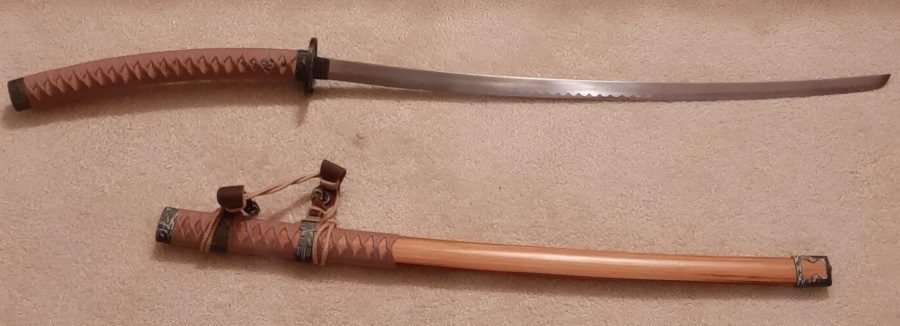
Jintachi swords have the same handguard as a traditional Japanese sword called a Tsuba. This guard can have a round or square shape and is intended to protect the wielder’s hands while using the sword. It is most usually made out of metal or stainless steel and can be heavily decorated with various elements.
The jintachi sword has an unorthodox handle shape as it is primarily a modern and ceremonial blade where its design was not intended to be functional.
Handle
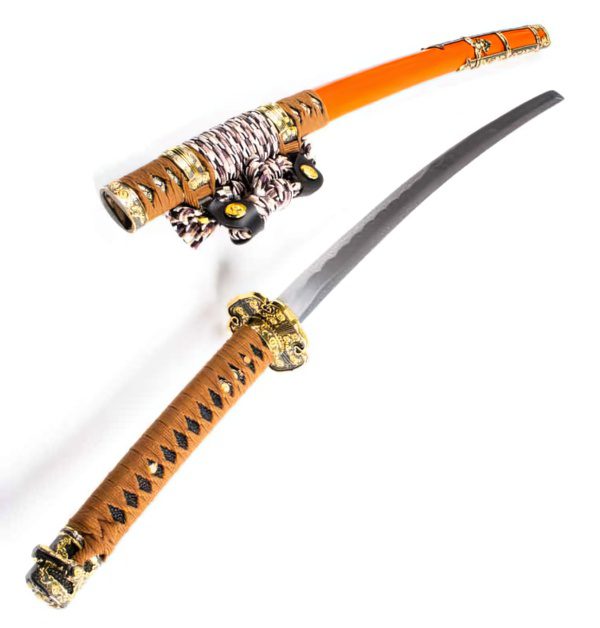
Jintachi swords have a Japanese Tsuka that is used on most Japanese Swords. It is a wooden core that is wrapped around real or fake ray skin (samegawa), and then with a silk, leather, or cotton Tsuka-Ito wrapping called Tsuka-Maki. This is done to enhance the user’s grip and strength while holding the sword but also for aesthetic purposes.
The handle can be traditional with a mildly curved design, or most popularly, an almost recurved shape that is on the opposite side of the blade. This is likely inspired from anime to make it look unique.
Functional Jintachi swords will have a full-tang blade, meaning that the actual blade will extend through and under the handle while being pegged by one or two Mekugi (bamboo or wooden pegs)
Scabbard
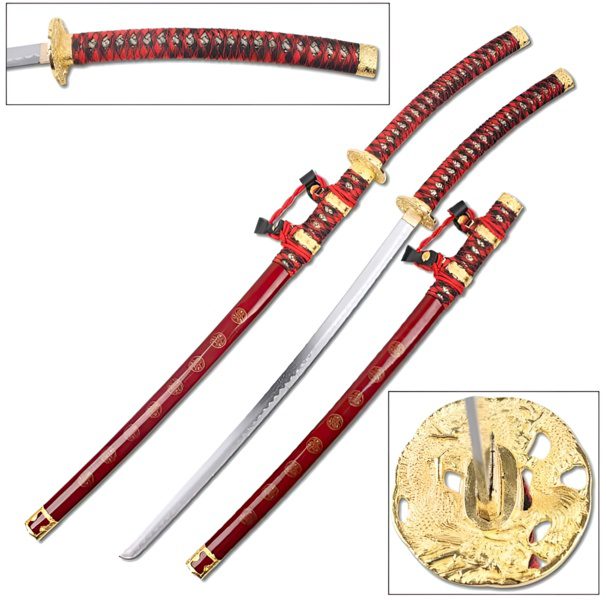
This fantasy sword has a traditional Japanese scabbard (Saya). Made of wood and curves just like the blade, it usually features a Tsuka-Maki and the traditional Sageo cord that is used to tie the sword to the Obi (Japanese belt).
Jintachi scabbards can be heavily decorated with many different elements, come in different colors, and feature a strong lacquer or polish. The traditional Tachi scabbard rope is called Ashi, which are two hangers that hold the blade while it is hung. Modern Jintachi swords can even come with a sword bag.
Size & Weight
Jintachi style swords can come in a variety of different shapes and sizes because they are fantasy weapons. Despite that, they often follow the historical measurements of the Katana and Tachi. That is why the modern Jintachi sword is often around 35 inches (90 cm) long and weighs around 2 lbs (900 grams) depending on the material that’s been used to create it.
Jintachi Sword Uses
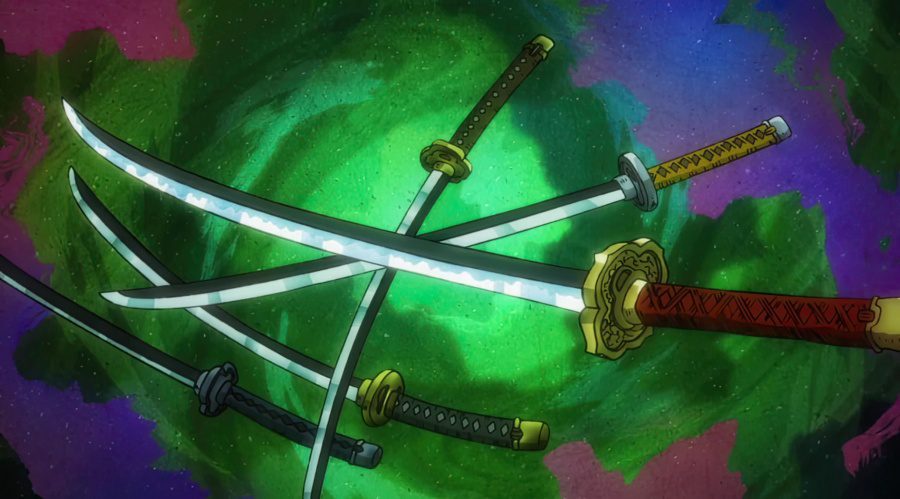
Although primarily wielded with two hands, the Jintachi can also be used using one. Inspired by the historical Tachi blade, the Jintachi follows its design and is therefore primarily a slashing tool.
Decoration & Ceremonial
The Jintachi is first and foremost a decorative sword often depicted in modern media. It is one of the most popular blades used in LARP (live action role-playing) events. Since most jintachi swords are not functional, it is often affordable, resulting in its appearance on wishlists and in the shopping carts of many cosplayers.
Functional
There are some functional versions of the Jintachi Sword. Created out of carbon steel and featuring a full tang, these swords can be sharpened to test their cutting abilities. These Jintachi are often more expensive and require proper sword maintenance.
Carrying the Jintachi Sword
No matter how the Jintachi sword is used, be it for cutting tests, decoration, or ceremonial purposes, it is important to know that it is carried in a different fashion than the Katana.
The Jintachi is carried on the left side of the user’s body and with the cutting edge facing downward. Unlike the katana, the Jintachi hangs from the scabbard via the two hangers and does not go through the belt.
Is the Jintachi a Katana Sword?

As mentioned before, the Jintachi Sword is not a Katana sword. Instead, it is based on an older samurai sword called a Tachi which was used primarily as a cavalry blade by Japanese around 10th century CE and it featured a much stronger curve than the Katana blade.
Jintachi swords were created in the 20th century and like the ninja blade (Ninjato), was never used by samurais in feudal Japan. While the Tachi is a real historical blade, the Jintachi is a hybrid that takes characteristics and elements from Japanese samurai swords and Chinese Dao sabers.

Some Chinese Dao sabers have a soft curve that goes throughout the entire blade’s length, starting from the pommel and ending at the blade’s tip. While this curve was not as prominent in earlier Dao blades, such as in the Liuyedao used for slashing, the form evolved and resulted in the PianDao, also known as the “Slicing Dao” due to its design.
That is why the Chinese Piandao, Japanese Tachi, and Katana, are believed to be the swords that led to the development of the modern Jintachi Sword, one of the most popular LARP swords in use today.





